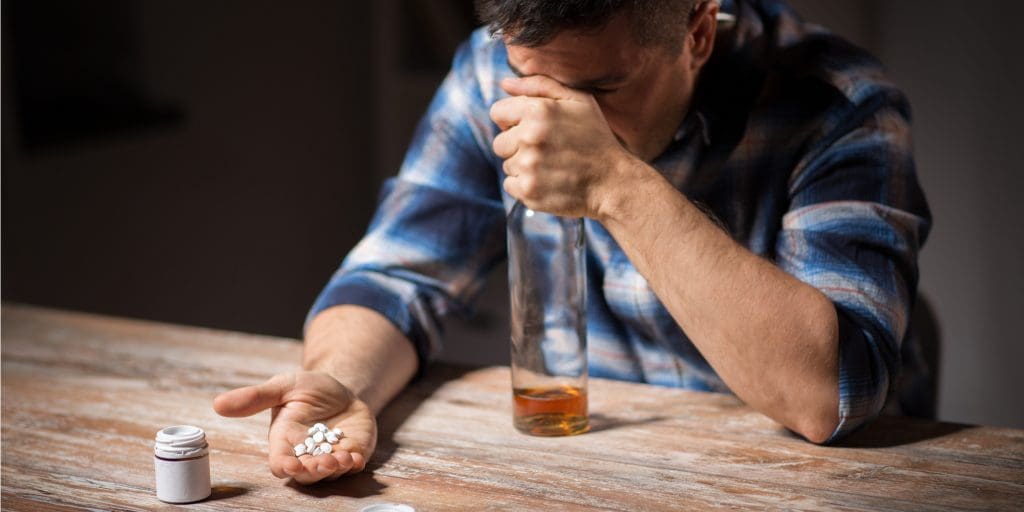Everyone has a natural response to fear. However, for some people, this response does not fully resolve once the threat has diminished. For those who are continuously affected by the trauma they experienced, PTSD may be the reason.

PTSD stands for post-traumatic stress disorder, a mental health condition that affects people who have experienced some sort of traumatic event. The difference between PTSD and the normal fight or flight reaction to danger is that the person does not fully recover from the trauma. Instead, they relive the event through flashbacks, nightmares, panic attacks, or ongoing anxiety.
Historically, military PTSD was thought to be the primary source of post-traumatic stress diagnoses. However, it is now understood that anyone can be diagnosed with this mental health condition. PTSD can occur at any time but usually presents within a few months after a traumatic event. The condition can have debilitating effects on a person’s life, leading to self-imposed restrictions from activities that might trigger a stress reaction.
PTSD Statistics
Most people will live through some sort of trauma in their lives and PTSD statistics deem that the majority will not develop post-traumatic stress disorder. However, many cases of PTSD may go underreported, and would therefore not be reflected in these numbers.
While each person’s experience with post-traumatic stress will be different, the Diagnostic and Statistical Manual of Mental Disorders (DSM-5) outlines that PTSD criteria include at least five conditions. These are:
In addition, these conditions will have continued for more than a month, not be attributable to any other condition (such as medication or substance abuse), and cause interruptions in daily life responsibilities (e.g., in work or social environments).

The arrival of the coronavirus in the United States in 2019 had a widespread impact on American’s mental health. This global health crisis exposed people to death, threats of death, fear of uncertainty, and numerous other unfavorable scenarios. Given this, anxiety after COVID has been high and preliminary research has reported that the pandemic stress experienced by first responders, COVID survivors, and the general public has elevated the rates of PTSD symptoms since the arrival of COVID-19.
As the country attempts to reopen and find a new normal, life after COVID is expected to expose the lasting mental health stressors the Coronavirus pandemic has caused. This is especially true for those already suffering from conditions like post-traumatic stress and anxiety.
Most people exposed to trauma will not go on to develop post-traumatic stress disorder. While reasons for this are not fully understood, there are some theories on why some recover normally from stress responses while others go on to experience chronic PTSD.
Most people who experience this type of trauma will suffer from co-occurring mental health or substance abuse disorders alongside PTSD. This combination can complicate both PTSD diagnosis and the treatment of post-traumatic stress. Fortunately, an accredited inpatient mental health facility versed in dual diagnosis and co-occurring disorders will be able to treat each condition separately and together.
Symptoms of post-traumatic stress disorder are generally categorized by avoidance of stimuli that triggers memories of the trauma, arousal (i.e., emotional outbursts), pervasive negative thoughts, and reliving the trauma through memories, PTSD flashbacks, PTSD nightmares, or something of the like. Because reliving the trauma is one of the post-traumatic stress symptoms, at least a month of time needs to have passed for an official diagnosis of PTSD to be made.
General signs of PTSD include:
There are some differences between men and women in regards to causes of PTSD as well as coping methods of post-traumatic stress. Most notable is the fact that women are about twice as likely to be diagnosed with PTSD. This could be due to a variety of factors, from how individuals cope with stress to who is more likely to ask for help. In any case, PTSD affects individuals regardless of gender and should be taken seriously.

A few other differences exist between women and men with PTSD. In addition to frequency, women often experience stronger PTSD episodes in comparison to men. Causes of PTSD in women usually revolve around childhood abuse, unexpected loss of a loved one, and sexual abuse or trauma. In fact, rape and other forms of sexual assault are major causes of PTSD, which are more likely to be experienced by women.
Other common signs of PTSD in women that are more prevalent in comparison to men include:
While women are more likely to be diagnosed, men also suffer from post-traumatic stress. Unlike women, PTSD in men is usually the result of trauma from disasters, accidents, or military combat. However, it’s important to remember that these are averages, and PTSD causes are not limited to any gender.
Other PTSD signs that are more prevalent in men in comparison to women include:
It is important to emphasize that despite PTSD statistics, any gender can experience all types of trauma and severe PTSD symptoms that regularly interfere with day-to-day life. It should also be noted that in an effort to escape these symptoms, individuals are more likely to self-medicate with alcohol or drugs. Due to this, substance abuse is a common co-occurring disorder with post-traumatic stress.

The connection between substance abuse and post-traumatic stress disorder is strong. In fact, of those diagnosed with lifetime PTSD, nearly 40% also struggle with drugs and/or alcohol. The reason for this is thought to be due to an attempt to alleviate uncomfortable symptoms of PTSD, as substance abuse often provides a distraction from associated stress.
Unfortunately, if substances are abused over time, addiction can develop. Additionally, those who suffer from co-occurring PTSD and substance abuse are more likely to develop other disorders (i.e., depression or anxiety). To date, the best method of treating co-existing post-traumatic stress and substance abuse is through a dual diagnosis program. In this way, both ailments are assessed together in an effort to understand how one relates to the other. Often, inpatient dual diagnosis is recommended, due to the comprehensive nature of this type of residential treatment.
Fortunately, post-traumatic stress is treatable, and once a PTSD diagnosis is received, treatment for post-traumatic stress can begin. In general, a mental health professional will perform an assessment and explore methods of how to deal with PTSD. Usually, the first line of defense against post-traumatic stress are psychotherapies that target processing the trauma, namely subtypes of cognitive-behavioral therapy (CBT).
Examples of trauma-focused therapy include:
If necessary, medication can be prescribed to alleviate symptoms of PTSD. However, it is important to understand that medication will not treat the causes of trauma, only the symptoms of stress.
At Georgetown Behavioral Hospital near Cincinnati, Ohio, our accredited inpatient mental health facility is experienced in treated post-traumatic stress disorder in and related health issues. Specifically, our dual diagnosis program effectively treats any co-occurring substance abuse disorders.
At Georgetown, our treatment team commits to providing a full continuum of care. This means we will support you before, during, and after treatment at Georgetown Behavioral Hospital. To learn more about how to start your recovery you contact us online or call our admissions staff at 937-483-4930, oftentimes you can be admitted on the same day.
You do not have to suffer from PTSD or substance abuse. With Georgetown Behavioral Hospital, you can begin healing today.
There is no fail-safe “cure” to PTSD. However, numerous effective treatments exist that reduce or eliminate symptoms of post-traumatic stress. Treatments usually include cognitive behavioral therapy and medication to alleviate symptoms (if necessary).
PTSD is caused by exposure to a terrifying event. Events commonly associated with post-traumatic stress include sexual assault, child abuse, natural disasters, and threats of death.
Yes. PTSD is a diagnosable Trauma and Stressor-Related Disorder.
Post-traumatic stress disorder (PTSD) is a mental disorder that is the result of trauma. A person with PTSD will not only experience a traumatic event, but they will also relive the experience through recurring memories, flashbacks, or nightmares. Due to this, those with PTSD are subject to ongoing symptoms such as sudden emotional reactions or avoidance techniques that protect them from reliving the trauma.
PTSD stands for post-traumatic stress disorder. It is a diagnosable mental health condition that is characterized by the difficulty of recovering from trauma.










